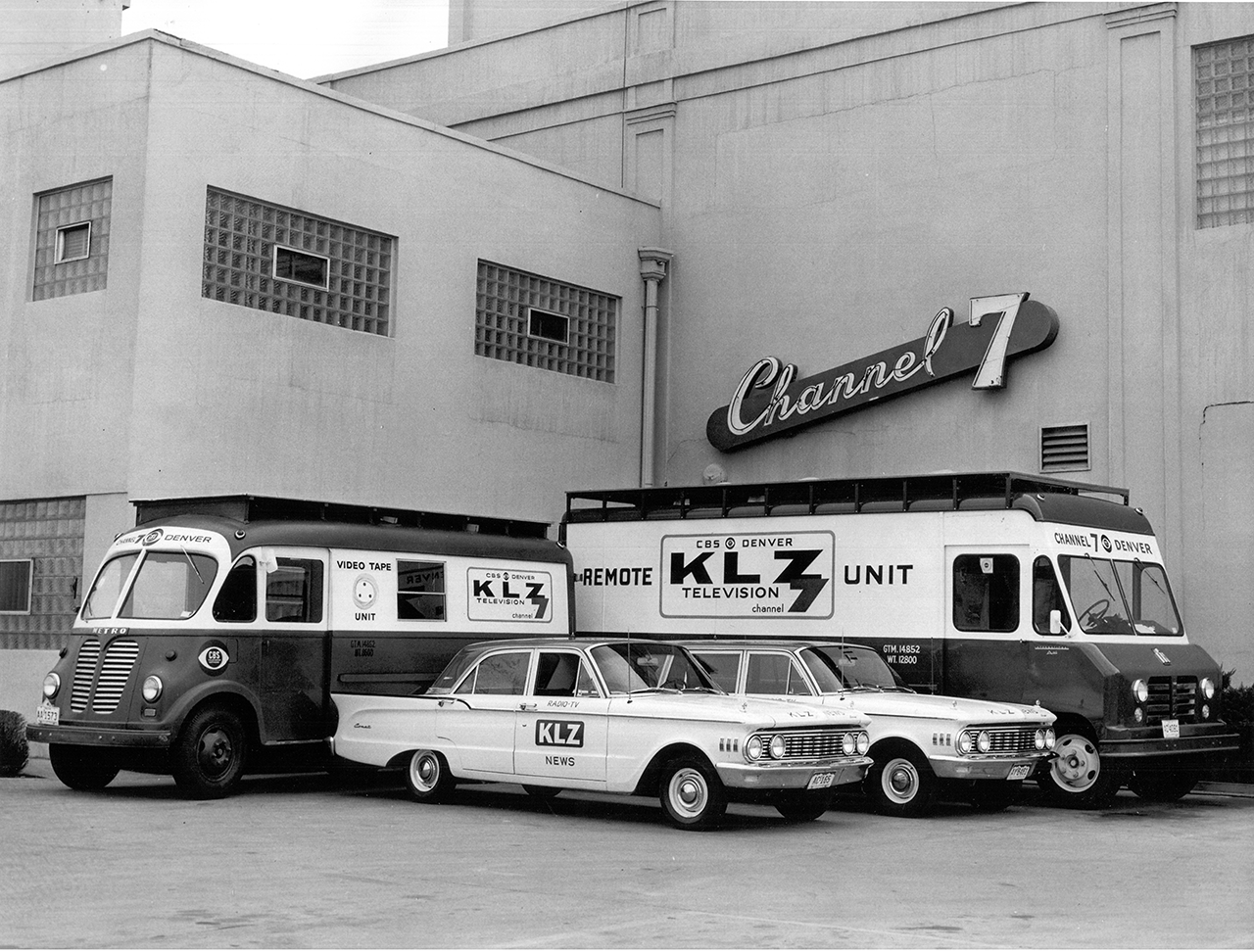Denver7 is marking 70 years of serving the people of Colorado with critical news and weather coverage and bringing together our state’s community in an ever-changing world.
Denver7’s reach across Colorado has taken us way beyond our roots of traditional TV to being one of the first local stations in the country to embrace and help transform local journalism into the 24/7 streaming space. Today, our audience connects with us through their mobile phones, their social media feeds, their Roku channels and even on YouTube.
It’s a much different world than those early days of radio and over-the-air television broadcasts, but Denver7 continues to embrace and thrive in the midst of the continued evolution of mass media and it all started generations ago. Before our call letters were KMGH, we signed onto the television airwaves on November 1, 1953 as KLZ television, but even before that – we had a rich history in the golden age of radio with the same KLZ call letters.
In fact, the Denver7 you know today can trace its roots as Denver’s very first radio station which signed on the air way back in 1920, eventually gaining the KLZ call letters in 1922.

A very early 1960s black and white film reel hosted by KLZ personality Paul Blue showcased our station’s philosophy in the beginning and we present this to you on our 70th anniversary as a way to get a better understanding of our mission serving the people of Denver and throughout Colorado.
“It is our fundamental belief that television is, in addition to being a magnificent entertainment machine, a significant illustrator of our times,” said Blue in the historical broadcast.
It all started in Denver in 1923. A dentist named WD Reynolds was a part of that era. He didn't care much for dentistry, he was more interested in fiddling around with the radio and tuning his E-flat alto saxophone. Reynolds started KLZ in 1922 and programmed it with his own saxophone music at his transmitter right in the basement of his old house in South Denver.
Dr. Reynolds had given Denver its first radio station during the busy 20s. In the depression during 1930s, Reynolds was there to broadcast everything from dance marathons to track meets. From flood coverage to broadcasting parades, Denver, an overgrown cowtown as Dr. Reynolds used to call it, had a population 256,000 in 1923.
After WWII, more people discovered Denver. They came west by the hundreds of thousands.

They needed houses and they wanted high-rise buildings, two cars in every garage, super highways, churches and they jammed and crammed into Denver. Sound familiar?
They built suburbs and shopping centers. They formed unions and trade associations. This isolated western city found itself a neighbor to the world, and it built boldly. The wind-punctured plains grew fast and rich with agriculture. Denver began to worry about industry caressing the sky with smoke and the water with pollution.
Voters got professional football and baseball and continued to build, build, build.
The city grew to 923,000 in 1960. KLZ grew too. 5,000 watts of radio power. And in 1953 we added the two magic letters: TV. Back then, the station was owned by Time-Life and decades later would be sold to McGraw-Hill around the same time we moved into our current building.

From the beginning of those early broadcasts, day-to-day reporting of spot news on both radio and television became a staple of KLZ and KMGH through the decades.
KLZ was the first station to televise a court trial in the state of Colorado broadcasting the trial of John Gilbert Graham, who was found guilty of planting a suitcase bomb onto United Airlines Flight 629, which blew up over Longmont in 1955.
KLC had requested permission to broadcast and televise the trial but permission was initially denied. We hit the air with a series of sharp editorials, got the Colorado Supreme Court to consider our case and won a revision of the judicial code of ethics. Because of KLZ’s tenacity, Colorado was one of the first states to prevent television, radio and photography in the courtrooms.
KLZ Television also was one of the first stations to host a local call-in show called ‘Party Line.’

“We like to keep close to our audience to make our programs two-way streets,” Paul Blue said in the film. “There's a nightly radio show called Party Line.”
“We are genuinely proud of our awards. We have them for showmanship for audio and visual coverage of news for medical and science reporting. For our contribution to the religious life of our city. We have the George Foster Peabody and two DuPont Awards, the Paul White Memorial Award and more awards in every category than any other broadcast facility in the nation,” the film finished.












